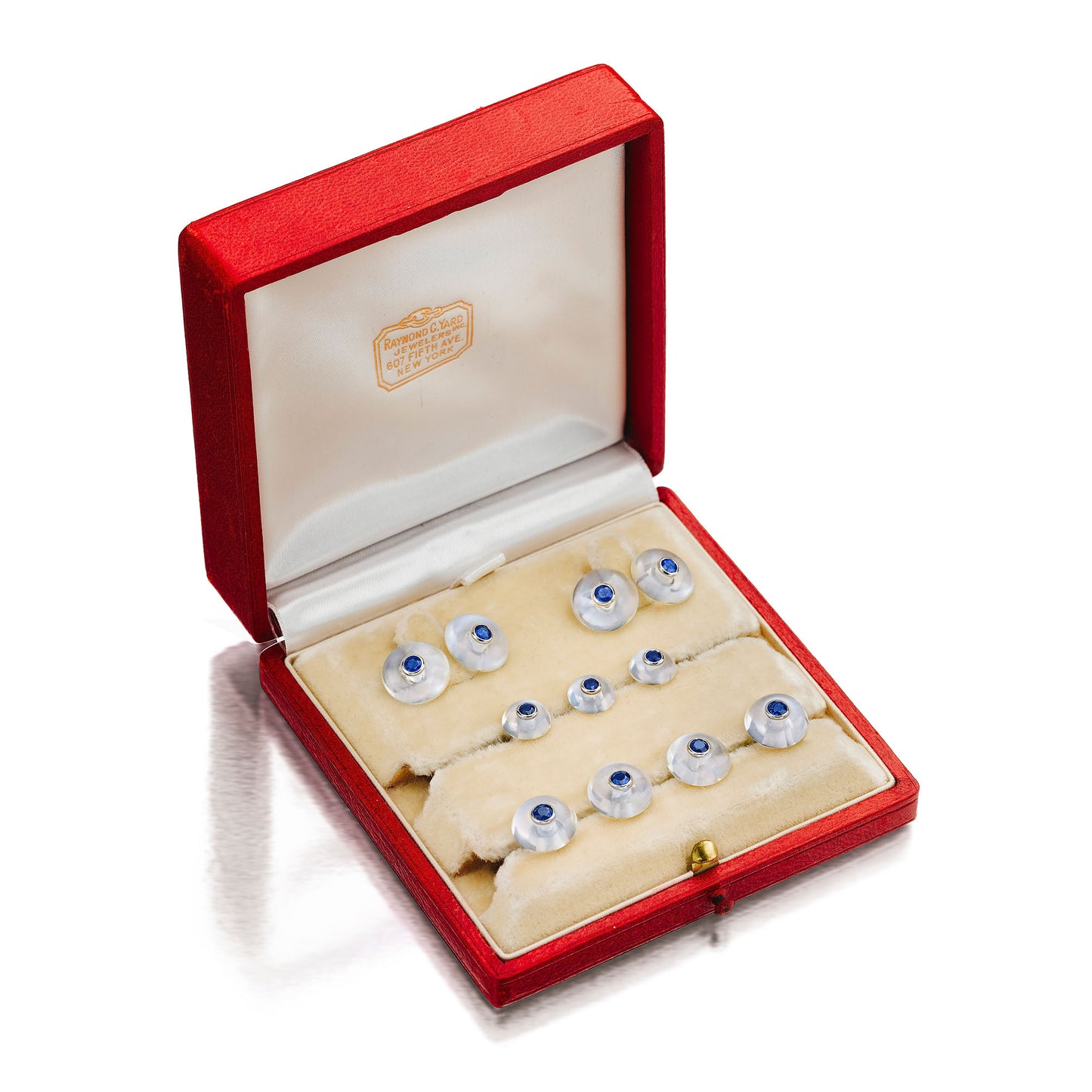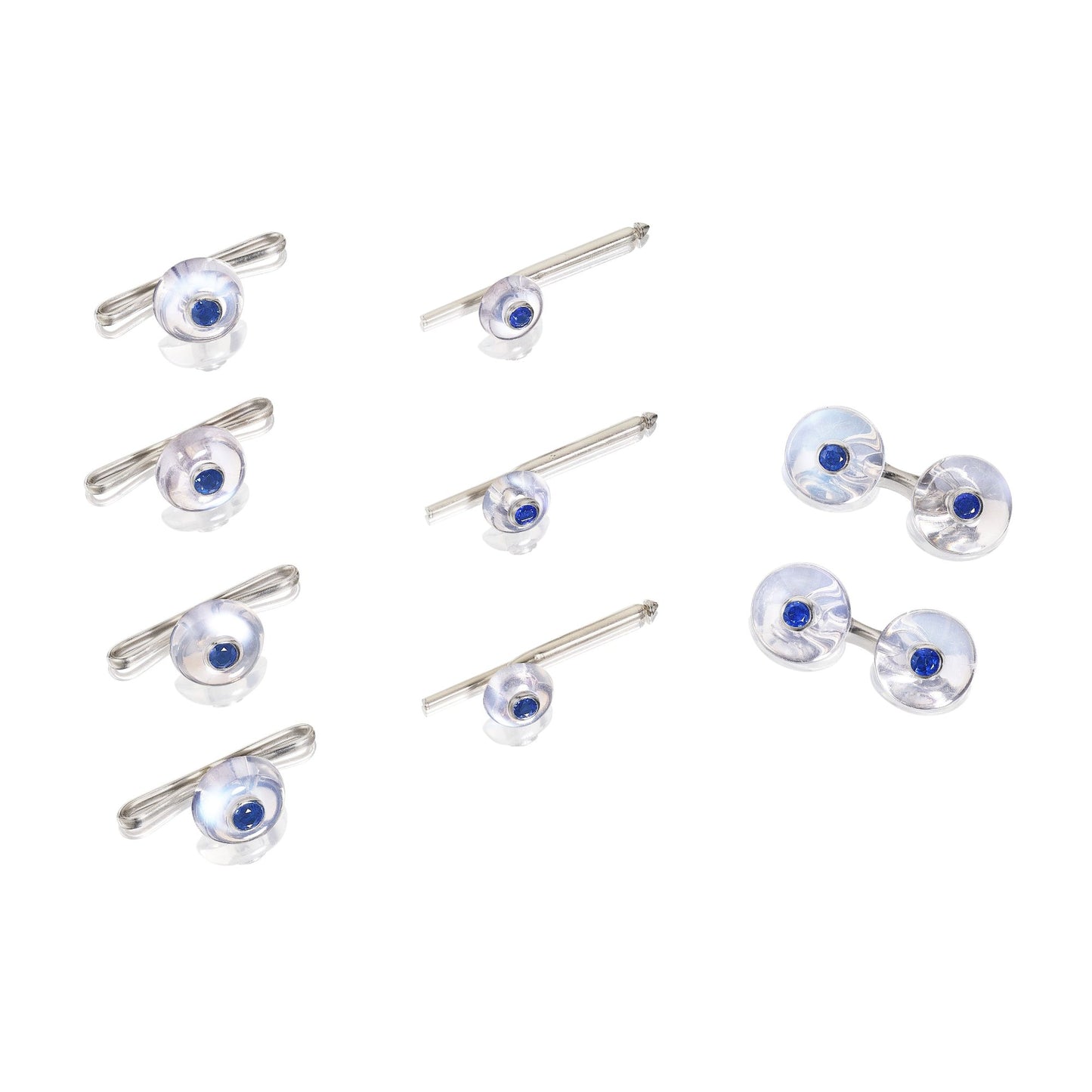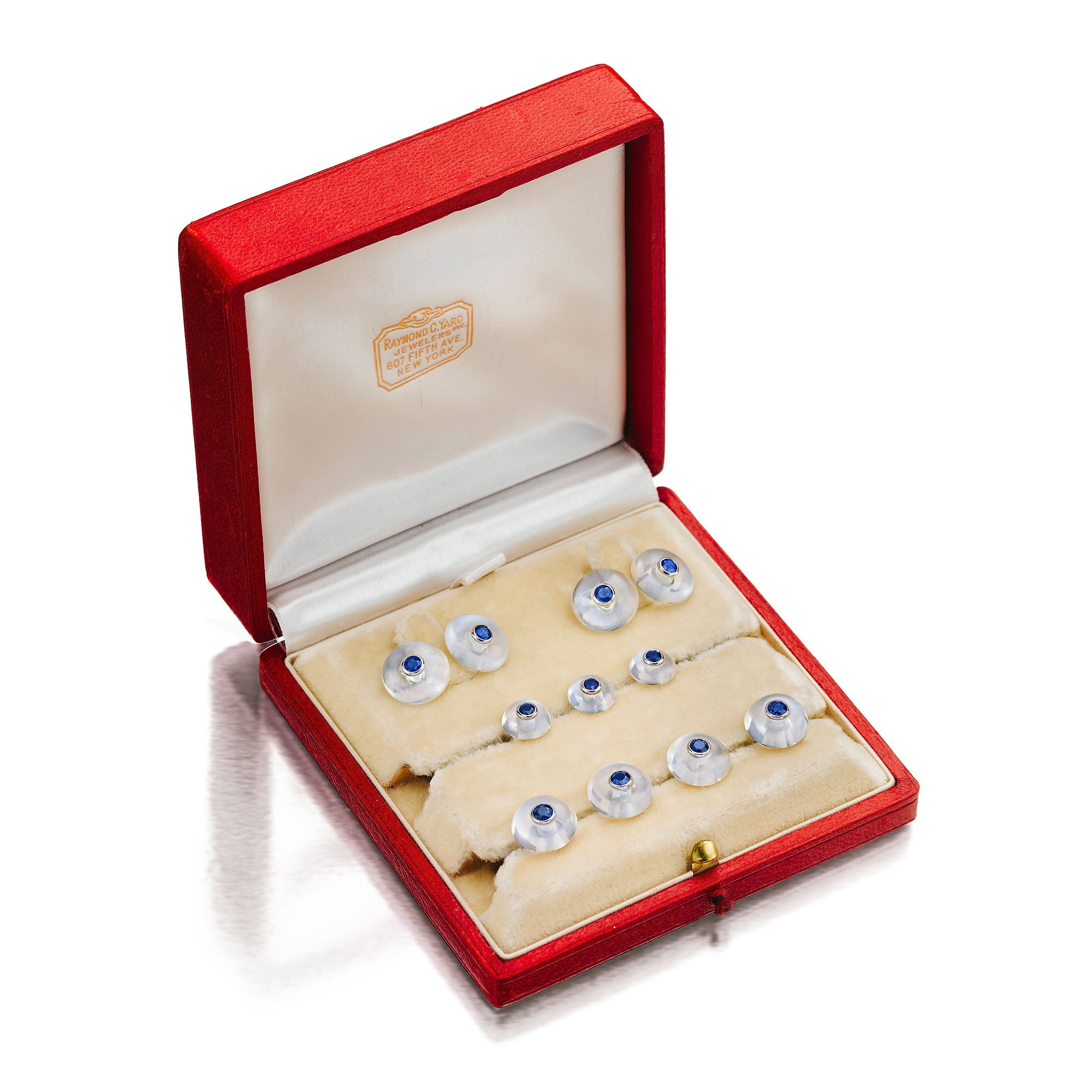ART DECO MOONSTONE AND SAPPHIRE DRESS SET BY RAYMOND YARD, NEW YORK, CIRCA 1920
ART DECO MOONSTONE AND SAPPHIRE DRESS SET BY RAYMOND YARD, NEW YORK, CIRCA 1920
SOLD
A dress set composed of a pair of cufflinks, four buttons, and three studs, each with a round moonstone set with a cabochon sapphire
- 11 cabochon sapphires
- In the original Raymond Yard box
- Cufflinks diameter: 7/16 inch; buttons diameter: 5/16 inch; studs 3/8 inch
Additional cataloguing
Biography
In 1898, Raymond Yard began his career in the jewelry industry as a thirteen-year-old door boy at Marcus & Co. He eventually became the firm’s general manager before opening his own firm in 1922 in an upstairs salon at 522 Fifth Avenue, catering to society, including the Rockefellers, Vanderbilts, and DuPonts, as well as screen stars such as Douglas Fairbanks and Joan Crawford. His insistence on using only the finest gemstones set into hand-made mountings earned him a reputation that rivaled the important jewel houses such as Tiffany & Co., Cartier, and Van Cleef & Arpels. After his death in 1958, three former employees continued the business.
Significance
The earliest known button, found at Mohenjo-daro in the Indus Valley, was a small round decorative ornament made of shell around 5,000 years old for sartorial flourish. The typical buttonhole was invented in the mid-thirteenth century, as clothing became closer fitting and buttons were used to accentuate the figure. In 1250, buttons were prized as luxury objects and laws and guilds restricted their use. During this medieval period, buttons meant power and luxury. The Italian term for a place powerful leaders meet is still stanza dei bottoni, “room of the buttons.” In the seventeenth century, Louis XIV, famously loved fine jewelry, and had many sets of diamond buttons, including a coat with 123 diamond buttons, diamond-encrusted buttonholes, and diamond sprays extending from the buttonholes.
By the Art Deco period, the Industrial Revolution and mass production had made buttons less expensive and easier to obtain and they were common on most articles of clothing for every class. The great French and New York jewelers, however, still fashioned elegant dress sets of luxurious materials for the men who purchased fantastic jewelry for their wives. While buttons and cufflinks provided a limited design surface, the jewelers created pieces with geometric clarity and bold colors to accent male evening attire. Besides a watch and perhaps a ring, a dress set was the only wearable jewelry for a man in the 1920s.
With a client base that included America’s wealthiest and most socially prominent families, Yard created tasteful and elegant jewels of the highest quality. Yard’s elegant designs are sought after and cherished today. This dress set is particularly beautiful, composed of rounded moonstone set with a cabochon sapphire, the buttons are meant to glisten in the low light of an evening event and catch the eye. Just as sartorially elegant as when they were created a century ago, this dress set would be a beautiful addition to any collection.





